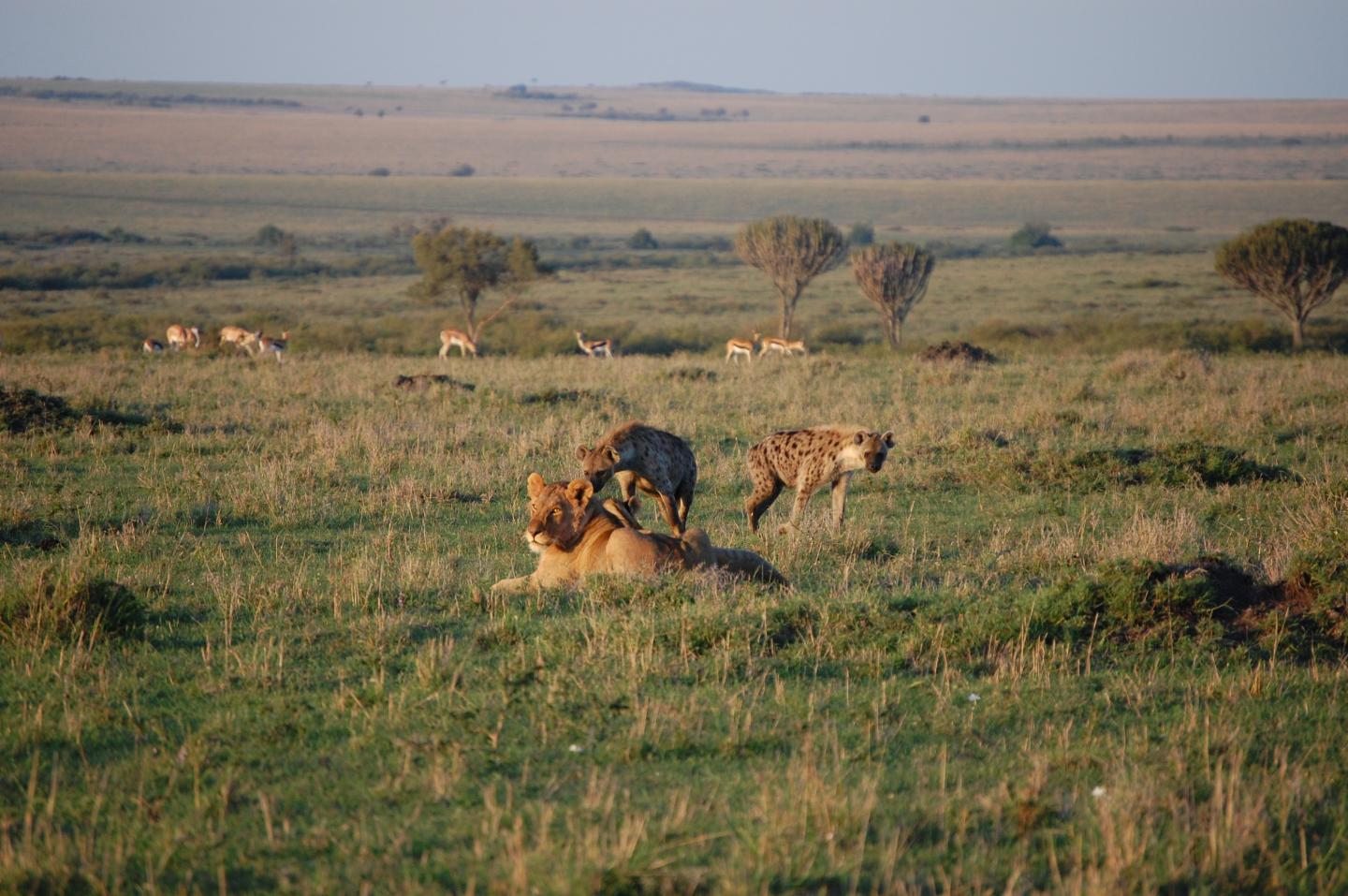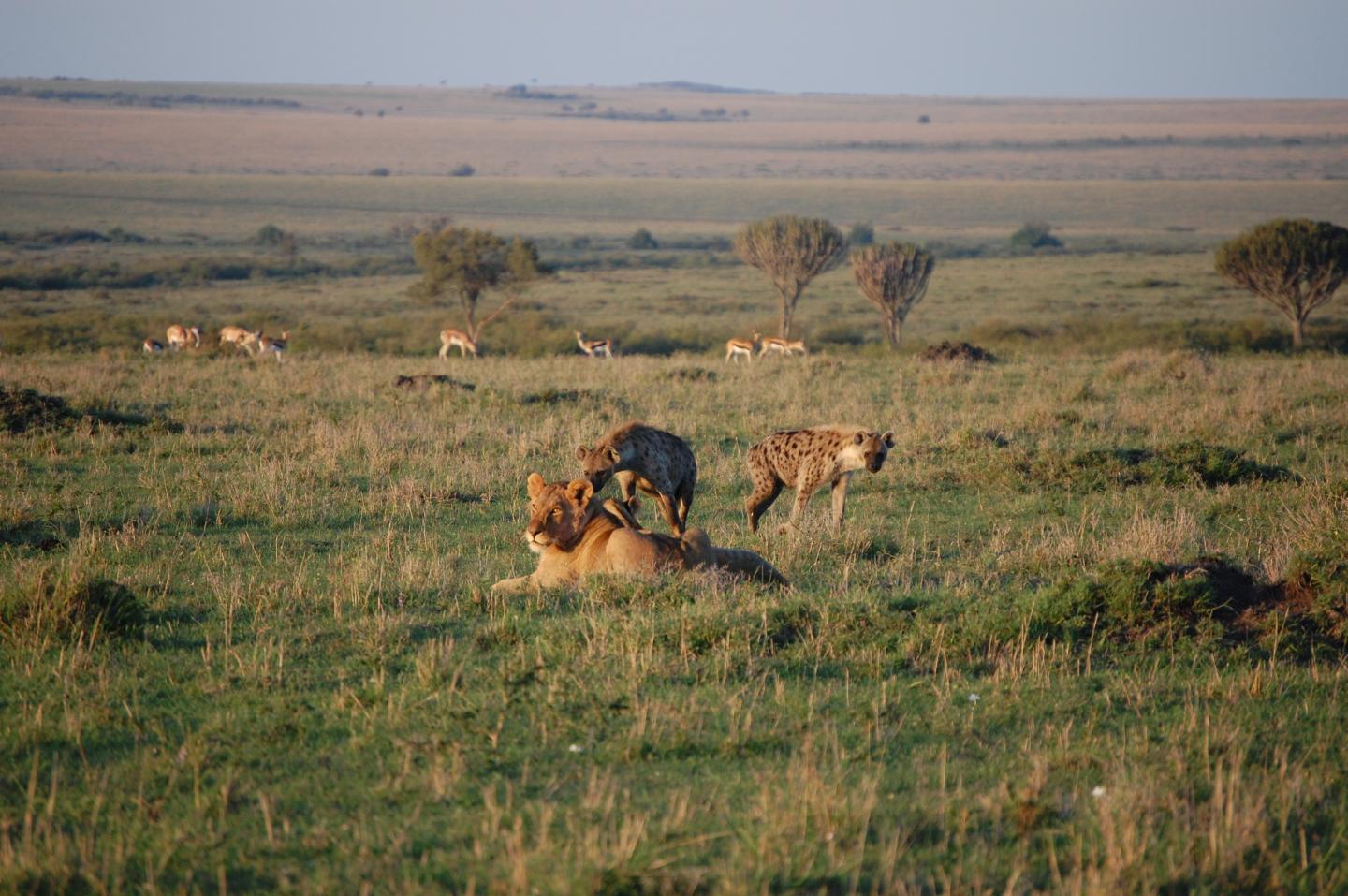
Credit: Courtesy of MSU
EAST LANSING, Mich. — Submitting to mob mentality is always a risky endeavor, for humans or hyenas. A new Michigan State University study focusing on the latter, though, shows that when it comes to battling for food, mobbing can be beneficial.
The findings, featured in the journal Current Zoology, fully describe for the first time, cooperative behavior during fights between two apex predators ¬- spotted hyenas and lions. Understanding the factors involved in the emergence of cooperation among organisms is central to the study of social evolution, said Kenna Lehmann, MSU doctoral candidate of integrative biology and study co-author.
"When hyenas mob during hyena-lion interactions, there is significant risk of injury by participating in this cooperative behavior," Lehmann said. "However, when they gang-up like this, they are more likely to win control of the food. This suggests that cooperative behavior increases fitness in hyenas."
Interestingly enough, hyenas will even mob lions when no food is present. The research team, part of University Distinguished Professor of integrative biology Kay Holekamp's lab, found that hyenas are more likely to mob lions when there are more hyenas present, regardless of food presence, fight location and how many lions are involved.
As this video shows, the interactions are intense. The mob sometimes starts small, but more hyenas enter the fray as the battle intensifies. Even against three lions, the smaller hyenas group as a single unit, giggling, growling and snapping like a hyena-headed hydra. Then, resembling a well-drilled military unit, they creep forward, drive the larger predators off a carcass and claim a feast for themselves and their clan.
Lions and hyenas have long competed directly and indirectly for resources. Even though cooperative mobbing behavior has been documented in birds and other mammals, this is the first research to fully describe this interaction.
Analysis of these complex interactions requires a large sample size, which can be obtained only from detailed long-term observational data, Lehmann said. Having access to MSU's Mara Hyena Project, the team was able to evaluate 27 years of data, covering the territories of seven hyena clans at two study sites in Kenya.
"This work would not have been possible without the long-term database," said Tracy Montgomery, MSU doctoral candidate of integrative biology and study co-author. "Not only did it allow us to demonstrate that mobbing likely increases fitness in hyenas, but it also will help us identify factors that will help predict whether this cooperative behavior will occur. It also has set the stage for additional studies."
Future research will dissect the elements of the mob, such as identifying the participants and their sex and rank. The researchers also will try to determine if all animals are sharing the workload or if there are regular cheaters, interlopers that skip the fight but share in the feast.
Additional studies also will hone in on the signaling involved, from vocalizations to changes in hormones before and during the events to glean insights on communication, cognition and cooperation, Lehmann said.
###
Additional MSU team members included Holekamp, Sarah MacLachlan, Jenna Parker, Olivia Spagnuolo, Kelsey VandeWetering and Patrick Bills.
This research was funded by the National Institutes of Health and the National Science Foundation.
Michigan State University has been working to advance the common good in uncommon ways for more than 150 years. One of the top research universities in the world, MSU focuses its vast resources on creating solutions to some of the world's most pressing challenges, while providing life-changing opportunities to a diverse and inclusive academic community through more than 200 programs of study in 17 degree-granting colleges.
For MSU news on the Web, go to MSUToday. Follow MSU News on Twitter at twitter.com/MSUnews.
Media Contact
Layne Cameron
[email protected]
517-353-8819
@MSUnews
http://msutoday.msu.edu/journalists/





